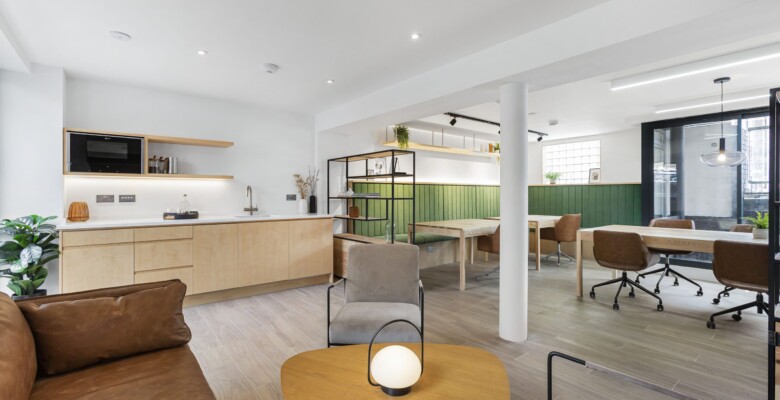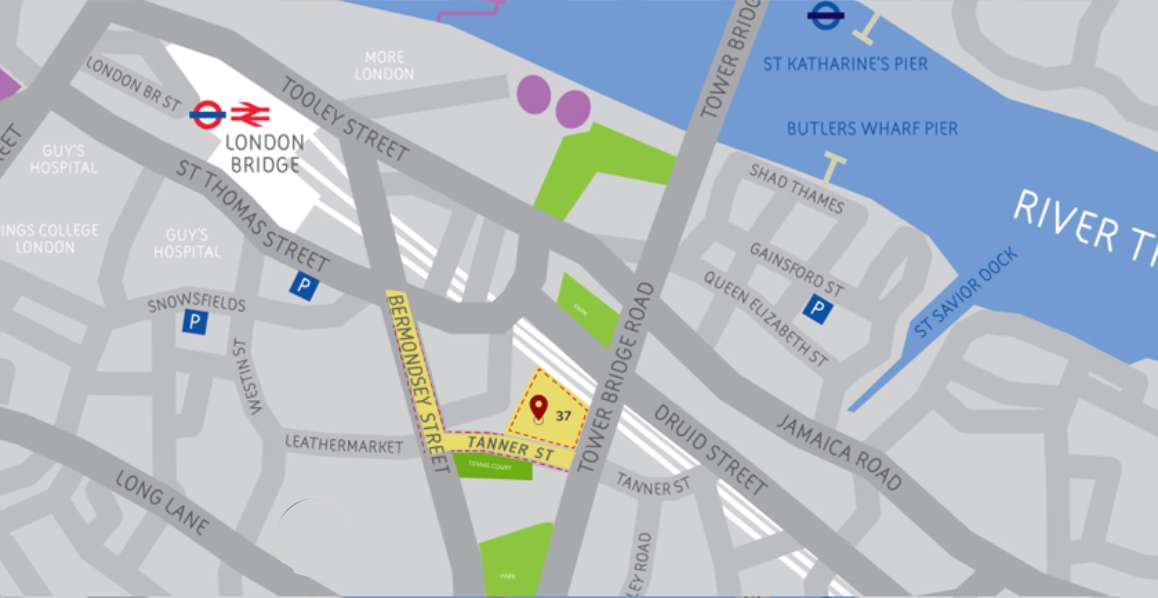Shared office spaces are steadily gaining popularity, with reports estimating the market size to reach USD 62.75 billion by 2029, growing at a CAGR of 8.67% between 2024 and 2029. If you haven’t discovered the cost-effective benefits of shared office spaces yet, prepare to be surprised. Shared office environments offer you and your employees several advantages. This article explores the world of shared office spaces, providing a comprehensive guide to this convenient working model. We shall cover the distinctions between shared offices and coworking spaces, along with key factors to consider before transitioning to a shared office setup.
What Does A ‘Shared Office’ Mean?
A shared office refers to a workspace that allows professionals employed by different companies to work within the same office. Shared workspaces are specially designed to foster collaboration and productivity, helping to further networking. All without having to lease expensive office space.
Types Of Shared Offices
When it comes to shared workspaces, there are two main types. These include:
Companies may discover unused office space within their buildings. In such cases, they sublet the space to professionals seeking a flexible workspace.
This works well for both parties, as the former already has office management staff in place to monitor the space, and they gain an additional stream of revenue. At the same time, the latter gets access to a fully managed space at an affordable cost.
These are built and designed keeping shared workspaces in mind. Rather than renting the workspace from another company, independent professionals and companies can simply book desks and share amenities such as meeting rooms, break rooms, etc.
What Are the Benefits of Sharing Office Spaces?

Shared offices are gaining popularity for many reasons. These workspaces offer considerable benefits, such as:
Shared offices give you access to a fully functional office space at a much lower cost, as compared to renting an entire office. You do not need to hire staff to manage the office space, and the cost of using it is shared with other professionals.
Shared offices are ready to move in. Most office amenities that you require are already available, requiring little to no notice, so you can start working from a shared office right away.
Office management, staff salaries, maintenance, etc, are some of the costs you shall have to bear in case you wish to rent an office. But with shared offices, these expenses can be curtailed. You can allocate your budget to more revenue-driving activities.
Shared offices give you flexible lease options that you can scale as and when required. This makes it especially suitable for hybrid teams that might need to work from the office for only a few days a week.
Office renting contracts are often long-term, spanning years. This makes it difficult in case your priorities change, and you no longer need an office space halfway through the tenure.
If that is likely in your case, shared offices are a good option. They offer short-term contracts that can be renewed or discontinued based on your business priorities and needs.
Modern shared offices offer valuable services such as printing facilities, security, parking, pantry, video conferencing facilities, etc. Here, you get access to all the necessary office amenities without having to purchase or maintain them, as is the case in a rented office.
Shared offices are naturally collaborative and help you meet like-minded professionals to build meaningful connections. Common spaces such as break rooms are a great place to strike up a conversation with employees from other companies and leverage new opportunities.
How Does A Shared Office Space Work?
The space is managed by the shared office provider, who ensures the smooth functioning of the shared office space and provides amenities required in a workspace like Wi-Fi, regular maintenance, meeting rooms, kitchen facilities, and more. Pricing plans can fluctuate based on location, the amount of space you require, and the amenities provided.
What Is the Difference Between Sharing an Office and Working in A Coworking Space?
Shared offices and coworking spaces might seem similar, but they have some significant differences. Here’s a look at some of these distinctions:
| Basis |
Shared Office Spaces |
Coworking Space |
| Office Layout |
Follow a traditional layout with private offices and meeting rooms.
|
These often have a layout that is spread out and collaborative.
They might offer a limited number of private offices. |
| Amenities |
Offers a traditional set of office amenities focused on functional needs. They have a variety of support services such as IT, reception, pantry, etc. |
Usually offer a wider range of amenities, including cafes, lounges, and event spaces. |
| Cost Structure |
Pricing is usually based on space or desks occupied, with longer lease terms. |
These offer day-to-day access with daily, monthly, or hourly memberships, without long-term obligation. |
| Privacy |
More private with desks and private offices. |
These spaces tend to be less private. |
| Control Over the Environment |
Tenants may customise their leased area to suit their brand and culture. |
Offers a shared environment, with less opportunity for personalisation. |
Who Uses a Shared Office Workspace?
Here are some professionals who benefit most from a shared office:
- Entrepreneurs: Shared offices help keep costs low while offering access to all the amenities offered by other workspaces. This makes it a great choice for entrepreneurs looking to drive business growth with limited capital.
- Freelancers: Shared workspaces allow freelancers a committed space to complete their work while helping them to network and connect with future clients.
- Consultants: These professionals often do not require more than an internet connection and a functional phone number to help guide their clients. Shared workspaces work well for them as these give them a dedicated space to conduct their business at an affordable cost.
- Remote Teams: For companies that have employees working in different cities, shared offices can help them set up a satellite office across locations. Remote employees can work from these shared offices and maintain communication with the primary office.
- Small Businesses: Companies with a small team benefit from shared workspaces, which help them work together, without having to bear the hefty cost of an office or hire staff to manage it.
Does Your Business Need a Shared Workspace?
Shared workspaces are flexible in terms of use and can offer a cost-effective alternative to renting an office space. Here are some common reasons your business might need a shared workspace:
- You need a bigger space but do not have the budget for it.
- You need an office space for a satellite team.
- You need a professional space to meet investors interested in your growing business.
- You are expanding your business to new territories.
- You require flexibility, allowing you to scale up or down as your business needs change.
- You want a prestigious business address without the investment required for prime real estate.
Things To Consider When Sharing an Office
Here are some points you should keep in mind when choosing a shared workspace:
- Cost: Be sure to calculate the per-head cost of the shared workspace to ensure your budget allows for it. Additionally, analyse what the costs include. For instance, do you have to pay a separate fee for reserving a meeting room?
- Location: The shared office must be easily accessible to employees and clients.
- Amenities: The shared workspace must offer amenities like parking, a cafeteria, a break room, meeting rooms, etc.
- Contract: Begin with a short-term contract with the shared office. This gives you the flexibility of changing workspaces in case this one doesn’t suit you.
Why Choose Garden Office Bermondsey?
Garden Office Bermondsey offers you office spaces equipped with modern amenities right in the heart of London. Designed to drive employee productivity and collaboration, our space is conveniently located near the London Bridge Tube Station. Our office spaces are complemented by on-site support staff, readily available to assist should any challenges arise. Give your employees a future-ready, efficiency-boosting work environment with Garden Office Bermondsey. To know more, visit Garden Office Bermondsey today!






